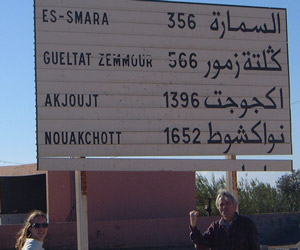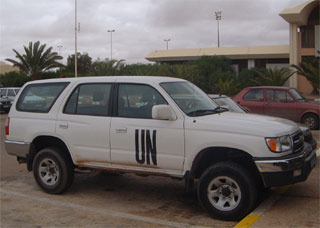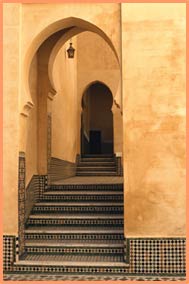History |
Cristel |
Southern
Sus
stories
and histories
| The
Western Sahara Question In his description of the Sus region, Leo does not go further than the Oued Draa (Draa river), a dry riverbed we crossed several hundred miles before we reached Laayoune- our final destination in this region. With a bit more time, and certainly more courage ( amenities start getting rather basic once you reach these parts of Morocco) we could have driven another 900 kilometers, before reaching the Moroccan-Mauritanian border. But none of this route would have been part of Leo's Morocco. Not that it was not considered a part of the Moroccan kingdom , but a rather deserted one, whose importance lay in its capacity as a passage between the Mediterranean and the Sudan (what was known as "black Africa" in Leo's days). While rarely visited for its own sake, it was a crucial element of the Moroccan kingdom, and 5 of the 7 ruling Moroccan dynasties originated from this Saharan province: in Leo's days, the Saadian dynasty had Saharoui roots; so does today's Alaouite family. |
 1652 kilometers between Tan-tan and Nouakchott, the Mauritanian capital |
Key dates include:
1956- Moroccan Independence; but several Moroccan territories are still occupied by the Spanish- including the Western Sahara.
July 1973- creation of the Polisario, the armed faction of the "Saharoui people" (the legitimacy of which is greatly questioned by many, given that there is no real evidence of the existence of a Saharoui identity or people...). Their name is an acronym standing for: "Front Populaire pour la liberation de la Saquia el Hamra et du Rio de Oro"- front for the liberation of the Saquia el Hamra and the Rio de Oro, both regions controlled by the Spanish. If you listen to the average Northern Moroccan individual, the Polisario is nothing but a collection of convicts and criminals sent from Algeria, Libya and Spain to spread havoc in a perfectly Moroccan region. And they will vehemently add that Spain and Algeria have been financially backing these ruffians for decades. That Spain and Algeria should be involved in this conflict comes as no real surprise- and the amount of land mines to be found in these parts of the desert attest to serious military investment on all parts of the conflict. But the "convicts and ruffians" theory is a bit harder to believe.
June 6th 1975- day one of the "Green March" when hundreds of thousands of Moroccan nationals walked through the Sahara provinces of Morocco, Koran and Moroccan flag in hand. This event is still celebrated yearly, as a national holiday (Cities are covered with big and small flags and everyone rushes home to watch the king's speech on TV).
 a UN truck in the Laayoune airport parking lot |
November
1975- Spain gives up its Saharan territory to Morocco. July 1979- armed conflict in what was once the Spanish Sahara, opposing Moroccan, Algerian and Polisario troops. This marks the beginning of a decade of warfare. July 1991- United Nations move into Laayoune, to organize THE referendum, which is supposed to determine whether this region will become officially Moroccan or an independent Saharoui state. So far, it has taken more than 8 years to decide on who will be eligible to vote in this referendum: nomadic tribes? Moroccan citizens living in the Sahara? Members of the Polisario independence movement? |
